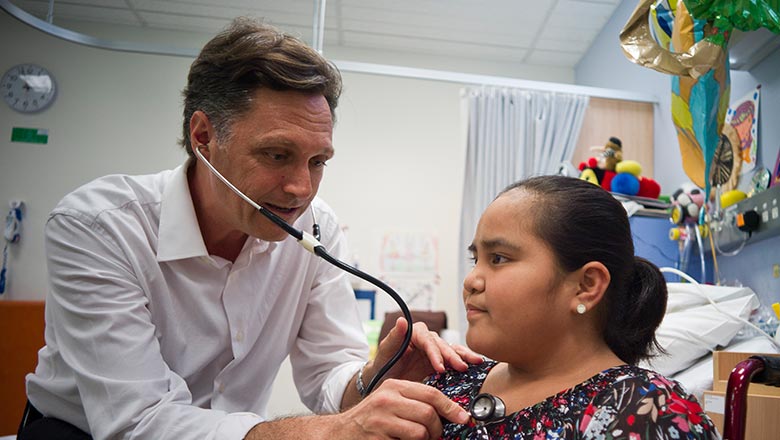Search

News & Events
The Kids Research Institute Australia researchers finalists for 2016 Eureka PrizesThree Perth researchers from The Kids Research Institute Australia have today been named finalists for the 2016 Australian Museum Eureka Prizes.

News & Events
Deborah Lehmann Research Award OpportunityThe Deborah Lehmann Research Award in Paediatric Infectious Disease Research is a funding mechanism to support the training and development of early- to mid-career researchers (EMCR) or Higher Degree by Research (HDR) students who are nationals from the Pacific Region working in or outside their hom

News & Events
Margie's story: Parent to a child with ARFWhen Liana complained of a sore foot and showed signs of a fever, her mum Margie rushed her to hospital. An X-ray of her foot revealed no obvious injury, so she was sent home and advised to take painkillers.
Research
Preventing heart failure: a position paper of the Heart Failure Association in collaboration with the European Association of Preventive CardiologyThe heart failure epidemic is growing and its prevention, in order to reduce associated hospital readmission rates and its clinical and economic burden, is a key issue in modern cardiovascular medicine. The present consensus document aims to provide practical evidence-based information to support the implementation of effective preventive measures.
Research
Ending rheumatic heart disease in Australia: the evidence for a new approachThe RHD Endgame Strategy: the blueprint to eliminate rheumatic heart disease in Australia by 2031 (the Endgame Strategy) is the blueprint to eliminate rheumatic heart disease (RHD) in Australia by 2031. Aboriginal and Torres Strait Islander people live with one of the highest per capita burdens of RHD in the world.
Research
Subcutaneous administration of benzathine benzylpenicillin G has favourable pharmacokinetic characteristics for the prevention of rheumatic heart disease compared with intramuscular injectionBenzathine penicillin G has been used as monthly deep intramuscular (IM) injections since the 1950s for secondary prevention of acute rheumatic fever and rheumatic heart disease (RHD). Injection frequency and pain are major programmatic barriers for adherence, prompting calls for development of better long-acting penicillin preparations to prevent RHD.

News & Events
Trans-Tasman partnership to tackle rheumatic heart diseaseResearchers at The Kids Research Institute Australia have begun a comprehensive research project into vaccines aimed at tackling rheumatic fever.
Research
Disparity in Mortality From Rheumatic Heart Disease in Indigenous AustraliansIndigenous Australians are much more likely to die from Rheumatic Heart Disease than other Australians.
Research
Rheumatic Heart Disease Worldwide: JACC Scientific Expert PanelThe authors present a variety of pressing clinical research questions on optimal RHD prevention and advanced care
Research
Inter-rater and intra-rater reliability and agreement of echocardiographic diagnosis of rheumatic heart disease using the World Heart Federation evidence-based criteriaThe WHF echocardiographic criteria enable reproducible categorisation of echocardiograms as definite RHD versus no or borderline RHD
